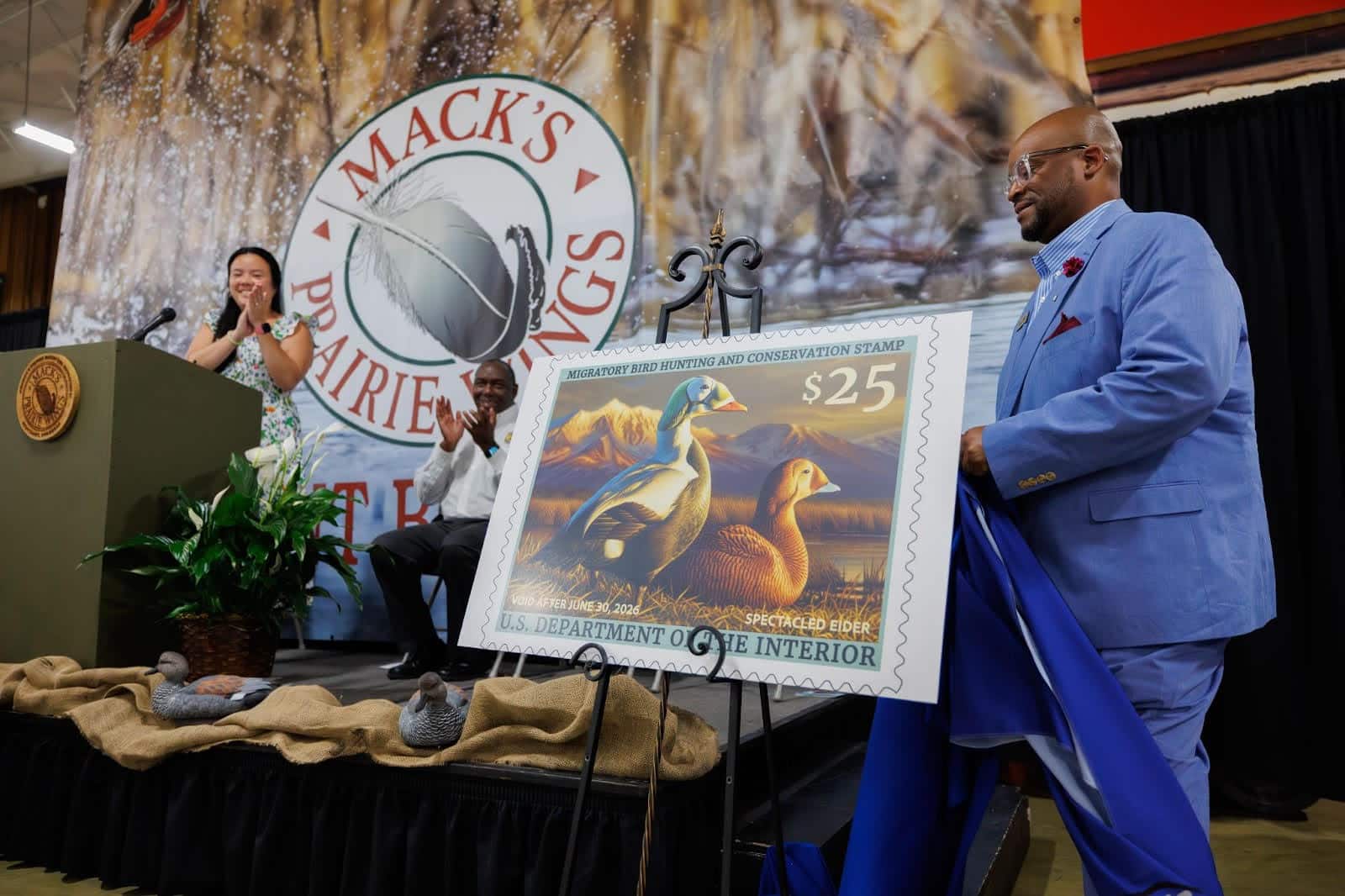River otters offer antics for winter wildlife watchers
ON 02-01-2023
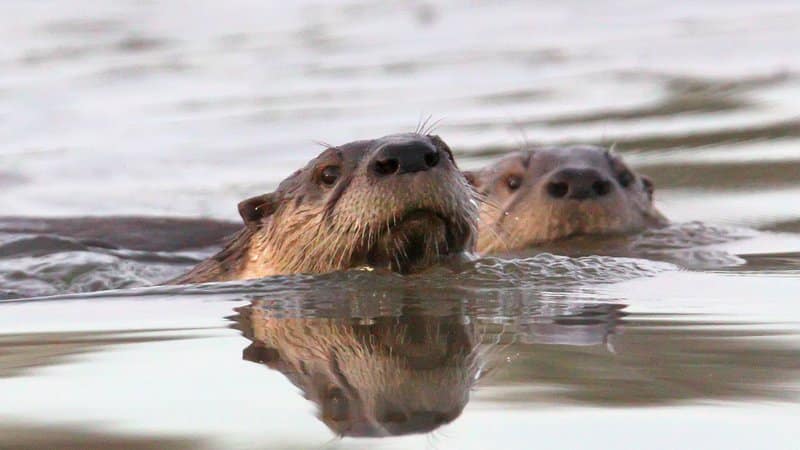
Feb. 1, 2023
Randy Zellers
Assistant Chief of Communications
Photos by Chris Newberry
LITTLE ROCK — Conservation comeback stories often focus on the amazing return of white-tailed deer, the black bear in Arkansas and other game species, but one of The Natural State’s most charismatic critters also came back as a result of proper game management and habitat conservation. Once nearly wiped clean from Arkansas’s streams, the river otter now enjoys a healthy population which benefits not only trappers, but the many men and women who enjoy watching wildlife from a canoe, kayak or other watercraft.
Comeback Critter
Highly prized for their luxurious furs, otters were regularly targeted by trappers and hunters looking to make a living during the early days of settlement. Conversion of many wetland areas to farms also dried up many of the intermittent streams that provided temporary wetland habitat for otters as well. Declines in beaver populations also reduced otter populations. Beavers, also prized for their pelts, were targeted not only for their fur, but also because of the flood damages they could cause to agriculture when they formed dams. Without this additional wetland habitat created by the beaver, river otter numbers continued to drop.
The decline of the river otter was so widespread throughout the nation that 22 states initiated some sort of relocation program to reintroduce these semi-aquatic mammals into their historic range. Arkansas otters fared better than most states, but by 1951, Arkansas Game and Fish Commission Biologist Trusten Holder estimated Arkansas’s remaining population of river otters teetered somewhere between 700 and 800 individuals, mostly within the Delta region of the state. Regulated trapping and sales of furs, declines in fur markets and best management practices protecting water quality and streams have combined to see a rebound in otter numbers throughout Arkansas. Now paddlers and boaters who enjoy small streams and rivers have decent chances of glimpsing these social members of the ferret, weasel and mink family.
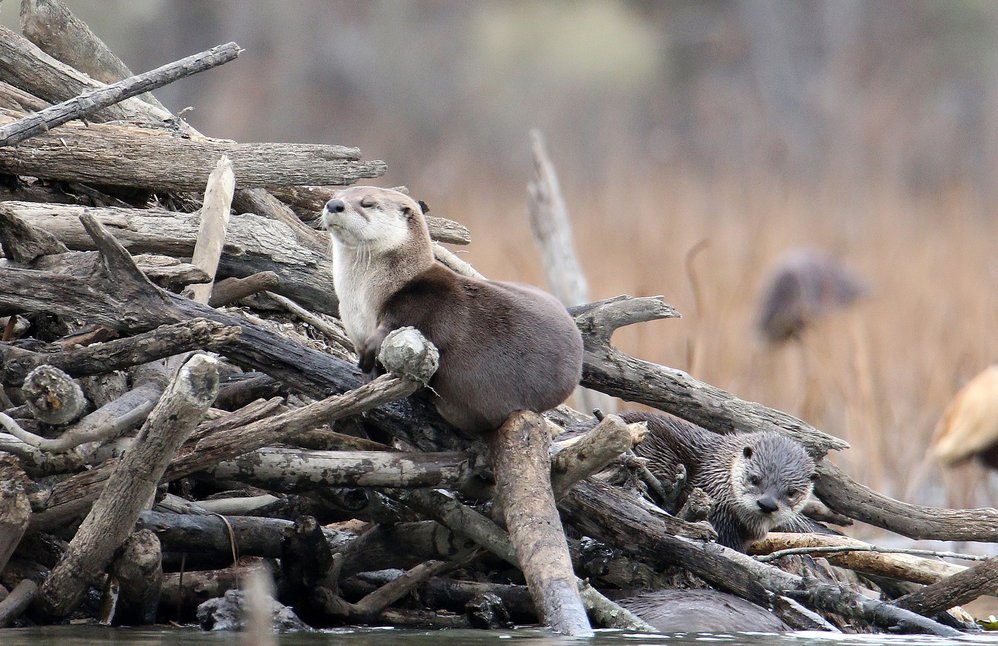
Sizing up Otters
Adult river otters range from 10 to 30 pounds, and stretch from 2.5 to 5 feet long with most hovering around the size of a yardstick from nose to tail. According to Kirsten Bartlow, watchable wildlife program coordinator for the AGFC, their streamlined bodies are made for life in the water.
“They’re really neat animals,” Bartlow said. “Their ears and nose automatically close when they go underwater. Their dense fur sheds water because of oils the otter produces, and heavy layers of body fat keep them insulated when the water is cold.”
In the water, otters are true predators; they are able to chase down fish, frogs and crayfish fairly easily, thanks to webbed feet and powerful swimming muscles. They also enjoy mussels, turtles and aquatic insects they find on their dives. They can remain submerged for up to 4 minutes at a time, and they have prominent facial whiskers, which are extremely sensitive and are used to find food.
On land otters are much less graceful and have an almost comical gate.
“They always remind me of a slinky on the move,” Bartlow said. “And if it’s snowy or icy, they’ll alternate that loping run with sliding on their bellies.”
According to Bartlow, otters are primarily nocturnal and active all year. A female and her young tend to live in a family group for their first year and communicate with each other through growls, chirps, squeals and other vocalizations.
“They’re relatives of skunks, and they also use scent and latrine sites to communicate with other otters,” Bartlow said. “They’ll regularly visit sites in their territory and deposit droppings and secretions from their musk glands.”
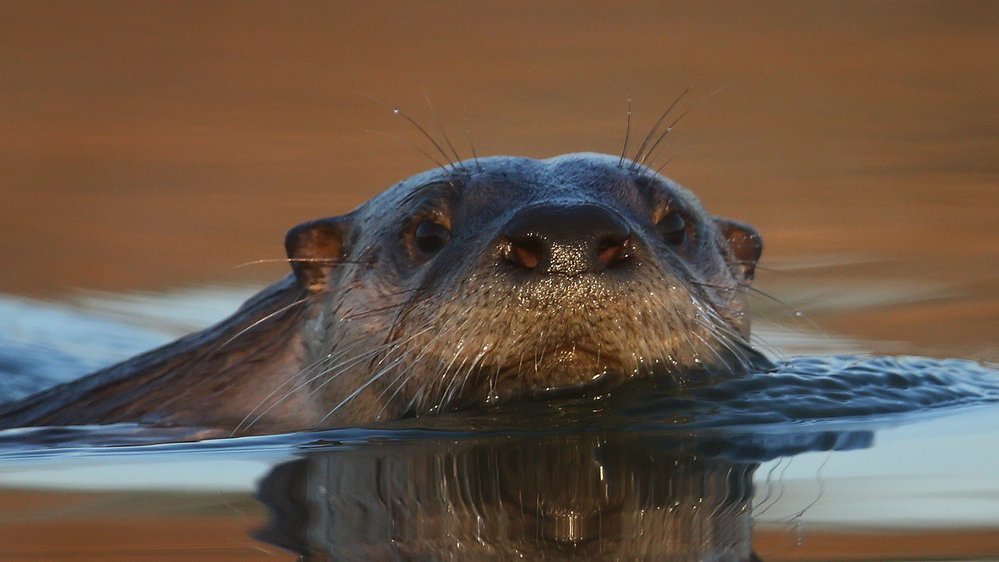
Watching From the Water
Some of the best times to catch otters in action is winter, and many streams see little boating activity during the months of February and March.
“You always need to dress for the weather and carry an extra set of clothes in a dry bag, but if you’re willing to go out and paddle in the winter, this is a great time to watch otters doing their thing,” Bartlow said. “Always tell someone where you’ll be going and when to expect you to return, and avoid any swift current. Some of the Arkansas Water Trails available in the central and east portion of Arkansas are ideal locations for a winter float, as are many of the streams and creeks that flow through many of the AGFC’s WMAs in the eastern half of the state. I’ve spotted otters on the Maumelle River outside of Little Rock and on Bayou Bartholomew in the middle of Pine Bluff. You don’t have to go far to see this really charismatic creature.”
Visit www.arkansaswatertrails.com for more information on water trails the AGFC works with partners to provide.
Recent News
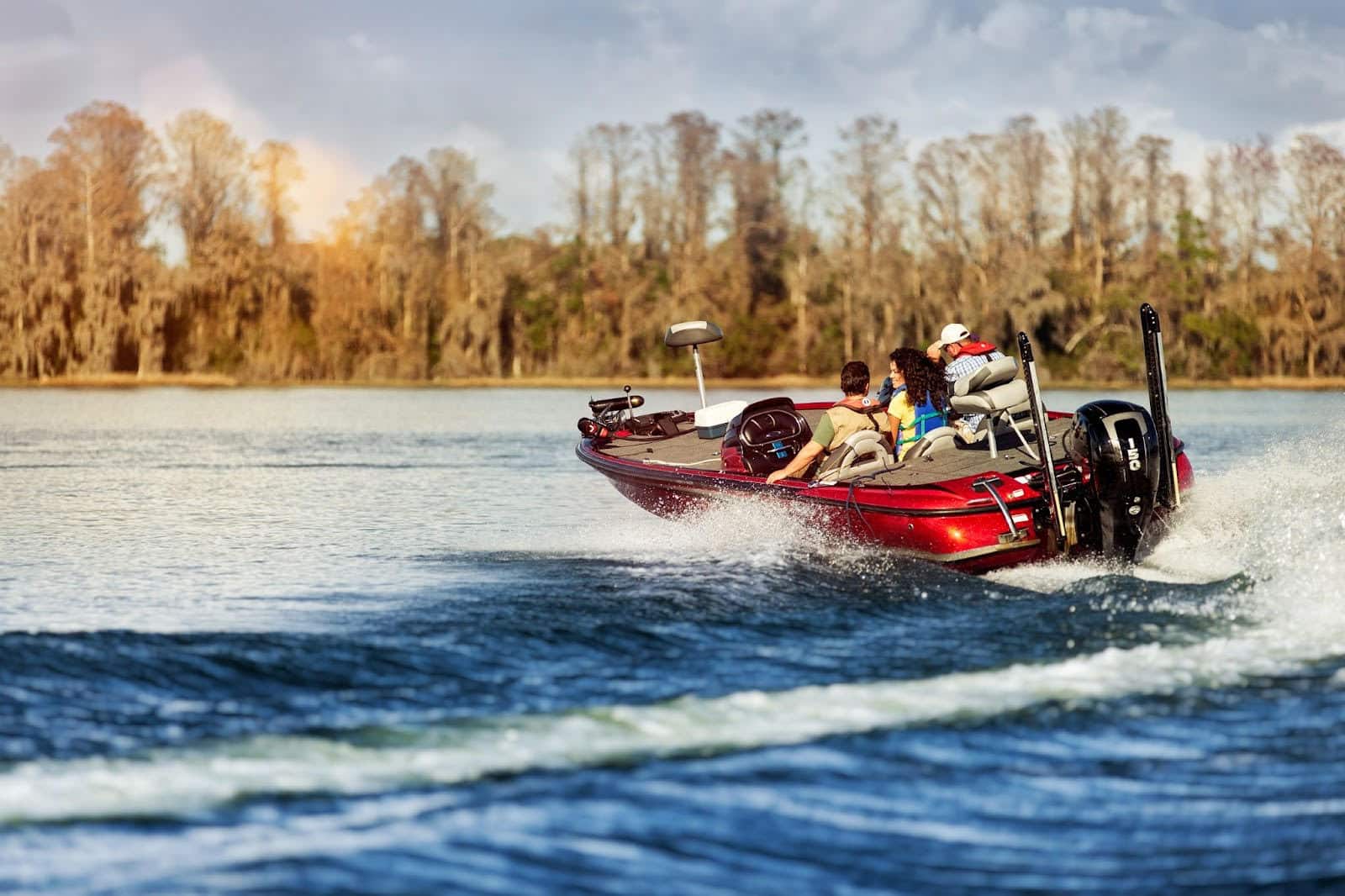
Watch your wake
Jul. 2, 2025
Subscribe to Our Weekly Newsletter E-mails
Don’t miss another issue. Sign up now to receive the AGFC Wildlife Weekly Newsletter in your mailbox every Wednesday afternoon (Waterfowl Reports are published weekly during waterfowl season and periodically outside the season). Fishing Reports arrive on Thursdays. Fill in the following fields and hit submit. Thanks, and welcome!

